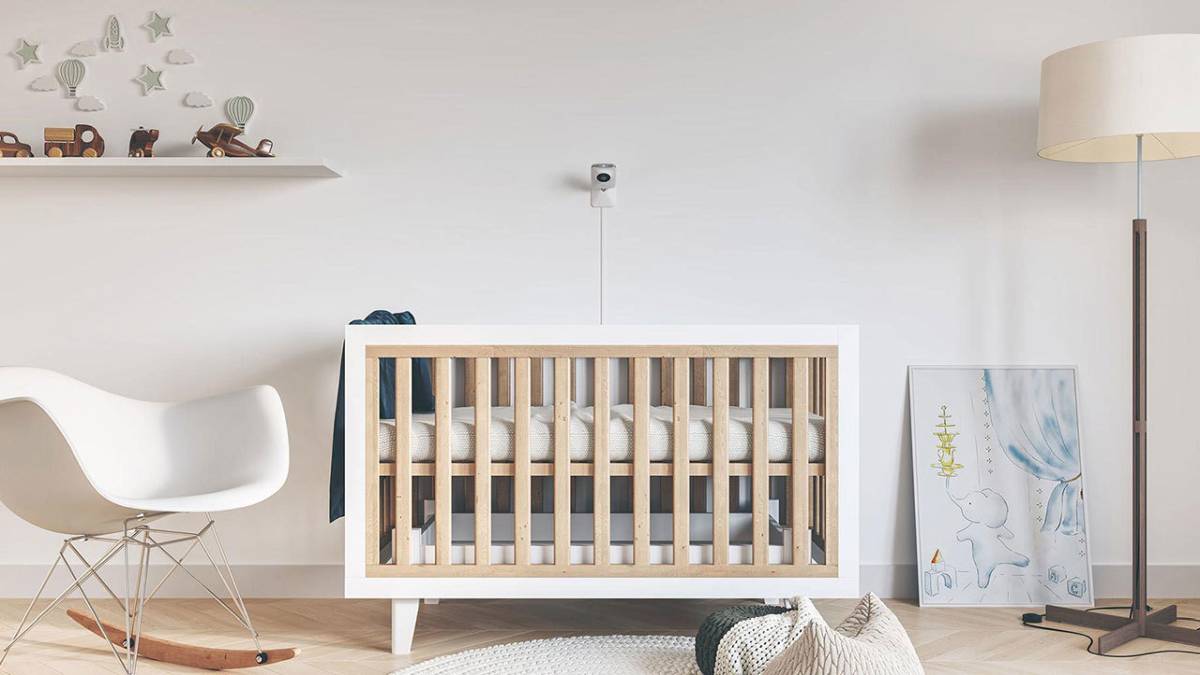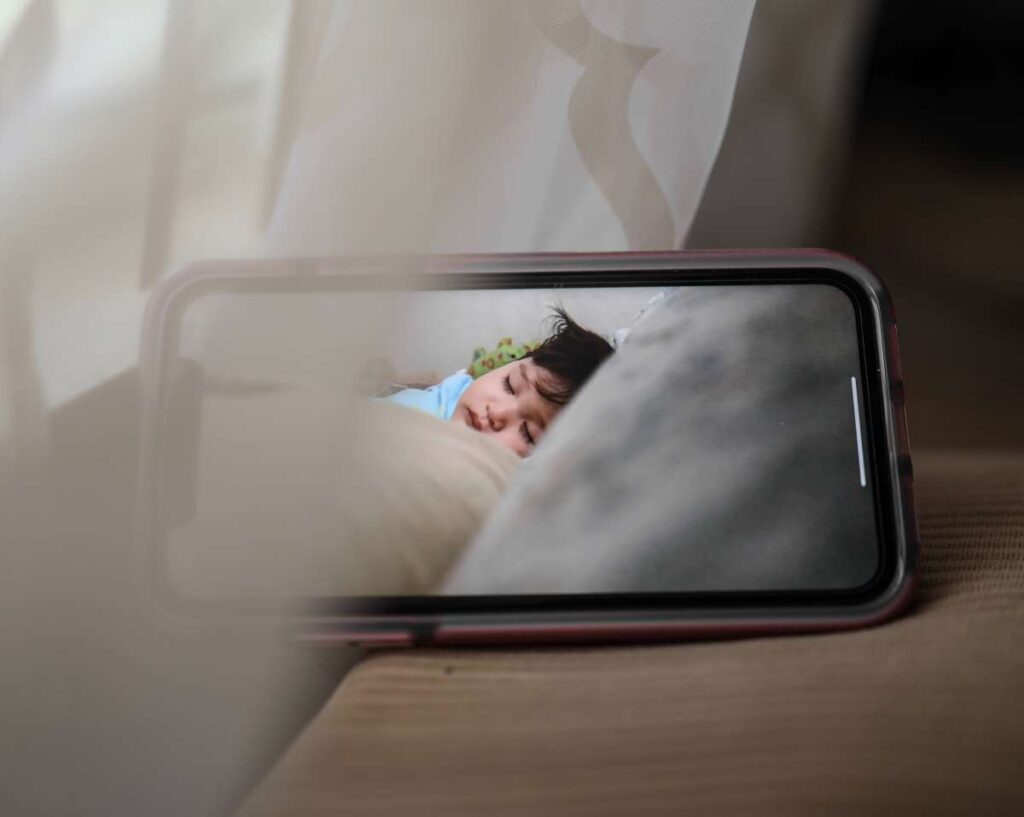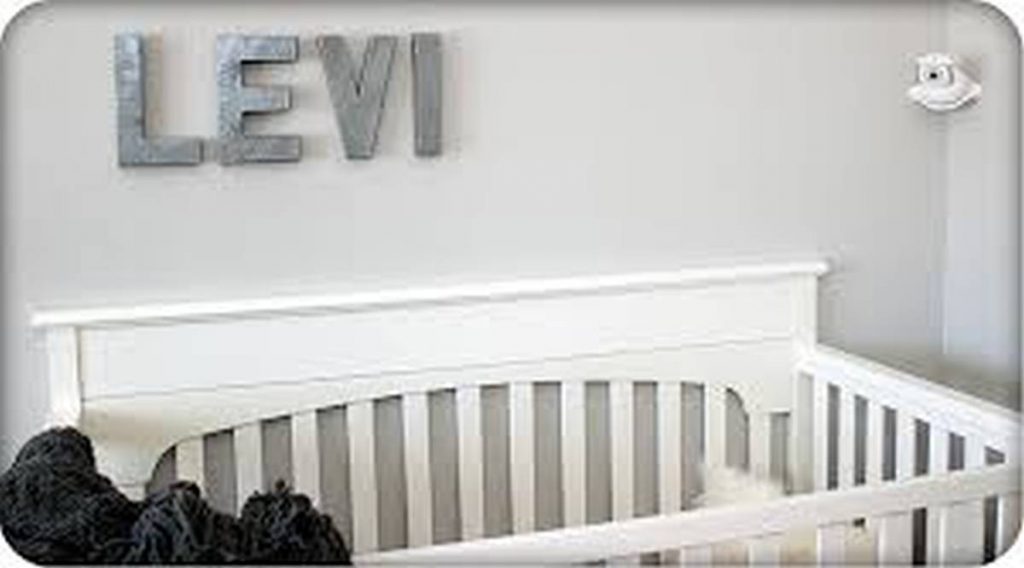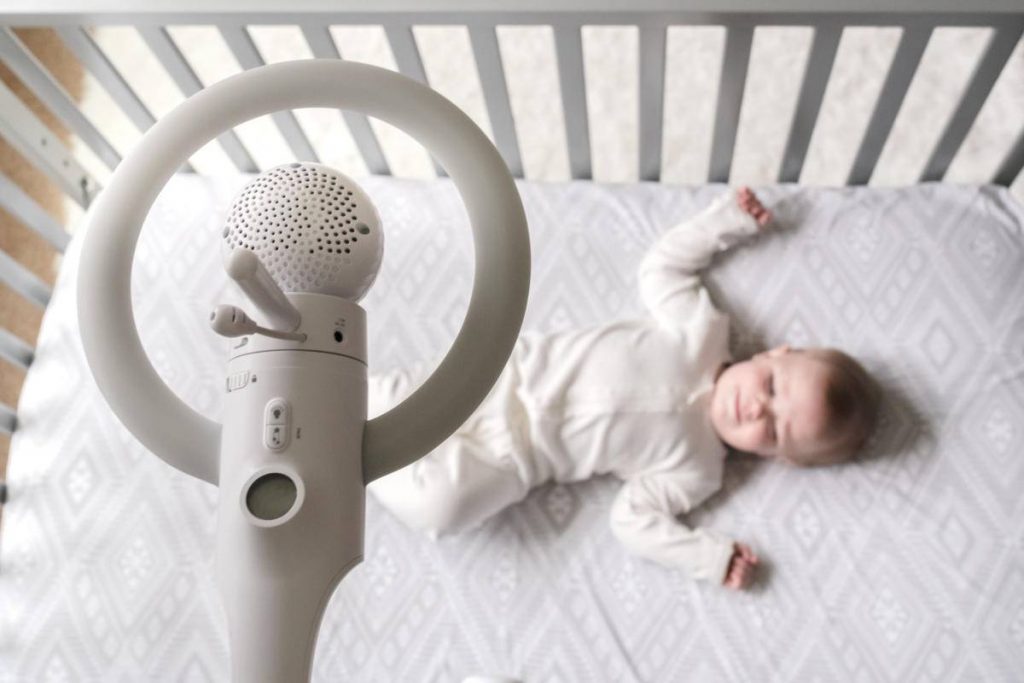You've prepared a room for your newborn kid and now the time has come to bring him or her home. Though there are some tasks you thought you could put off until later, like installing your baby monitor, the majority of your priorities are already fixed. This is not a major issue because they are simple to install. The primary consideration should be the location of the screen placement.
Many first-time parents don't know that there are specific requirements for how to position the monitors and where it ought to be placed in order to get the clearest possible image of their baby and the nursery. There are two major factors to consider when setting up your baby monitor: where to put it, and how far away it needs to be. It is also important to know and understand all of the risks and safety precautions to be aware of.
After a few days in the hospital,we believed we were prepared to bring our daughter home. He assembled the crib, and we stockpiled diapers. Even though we had the baby monitor at the ready, we couldn't settle on whether to set it up on the bedside across the room, next to the crib, or in the crib itself. Our lack of forethought was exposed, but imagine that many new mothers have wondered, "How close can we get the baby monitor to the infant?" Obviously, you want to make sure your kid is secure, but you also want to keep an eye on them.
Baby monitors can be lifesavers for prospective mothers, but the cord should never be within your children's reach for their own safety. Seven deaths and three near-suffocations have been linked to baby monitor cords since 2002, according to the U.S. Consumer Product Safety Commission. (CPSC). This alarming number is why groups like the Consumer Product Safety Commission and the Juvenile Product Manufacturers Association (JPMA) urge parents to be vigilant about child safety. monitors at least 3 feet away from their baby. In other words, you should never place the monitor in the crib or right next to it — it's just too risky.
You may want to double-check the crib's safety features just to be sure. The Children's Hospital recommends keeping the baby monitor at least 3 feet away from the crib or cot, and they also recommend tucking away any loose cords, especially if your child is starting to crawl.
Baby monitors can be a lifesaver, but not knowing where to mount the baby monitor for the best view can be a problem. The key purpose is to allow you to get on with your work and life while knowing your baby is sleeping safely. It's all in the details. Owning the best baby monitor is not going to mean much if you do not place it in a secure position and at the right viewing angle.
Now, let's get down to the nitty-gritty of how to make the most of a baby monitor.
Looking for baby monitors for baby nursery? Look no further. Check out our range here.

Angle And Distance Of Baby Monitor
It's crucial to think about the camera's perspective first. Select the region you wish to keep an eye on, and then tweak the camera's settings until the view includes everything you need to see. When deciding on a spot, you should make sure the sound and video won't be disrupted by any nearby obstacles.
Having your screen permanently attached to a wall is a great choice. Your baby will be safe here, up high and out of harm's way, and you'll have a bird's-eye view of her or his surroundings. If your display allows you to zoom in and out, this would be the best option.
You might also use a shelf or other elevated surface to set up the screen. In this way, you can relocate it, safely out of the reach of your kids. If your monitor doesn't have the ability to tilt, pan, and zoom, then placing it on a bookshelf or dresser is the next best thing. If you opt to secure to the crib, put it high enough that the youngster can't reach it; otherwise, it will quickly become the child's favourite plaything.
For newborn babies, The best way to peek in on your dozing kid is from above. When they are able to sit up and stand in a crib, you might want to turn the angle down so you can keep an eye on them while they are awake.
It's important to have easy access to your screen. As your child gets older, you may have to relocate the monitor, so pick a spot that gives you some wiggle room. In addition, you should check to see if the cords can reach the nearest electrical outlet.
If you want to record a larger area on your display, it's a good idea to look into cameras that have a wide field of view. Some models also have remote pan, tilt, & zoom controls for maximum flexibility.
A safe distance for a baby monitor is three feet from a crib, bed, or other sleeping area. play area. In most cases, the further away from your infant you can keep the monitor while still getting a clear picture and sound, the better.
Wall-Mounted Baby Monitor
Many video baby monitors will come able to be hung on the wall. It might be a standalone accessory or an integral part of the screen.
Some screens were designed specifically for wall mounting. They will have a sturdy and simple to install wall mounting system. Some are attached using a more simplistic method. A hole cut into the bottom of the base is one possible solution. A piece of double-sided tape to fasten the screen to the wall is an excellent idea in this situation.
How Should A Baby Monitor Be Hung On The Wall?
You should start by figuring out where in the room would be the most suitable location for your monitor. You may get a bird's-eye view of the entire nursery from this vantage point. The doors and windows, as well as the play area, are a great touch. If the drapes are open or the cat remains in the room, you will know it.
Use a ladder and experiment with different positions to determine the optimal viewing angle to minimise the need for additional wall anchors.
Put that baby monitor into an electrical socket immediately. Make sure the cord is long enough to plug in. It is not acceptable to use an extra cord. The allure is simply too great to ignore. toddlers can have fun with. They can use it as a play pouch or a wrapping material.
It's important that all wires be fastened firmly to the wall. A strangulation hazard exists due to the hanging wire. You should do it now even if your infant is probably still too tiny to walk around and grab for things. When it comes to baby-proofing the bathroom, many new parents put it off until later—and then forget. Putting forth the extra effort to make sure your kids are safe is crucial. To avoid the wire from dangling, use a cord cover. This plastic conduit is sturdy, so it may be screwed into the wall and used to conceal the wire. The similar technique can be utilised to control the cable that runs beneath the floor.
If you need to run wire, the ideal spot to do it is in a corner, behind some bookshelves or a thick curtain. You can avoid the unsightly appearance of a wire along the wall by concealing it within the wall. This option is not only more aesthetically pleasing, but also safer for your child.
You should give some thought to how difficult it will be to remove the baby monitor from the wall after you've mounted it there. If your infant sleeps anywhere other than his own crib, this could be an issue. That time might be spent on a trip or with friends. Because of this, we were able to continue working normally by connecting an additional set of monitors.
Here is an alternative mounting method to consider if you'd like not make any permanent changes to the wall.
Check out our range of safety baby monitors here.
Baby Monitor Security
Seven infant deaths and three near-suffocations have been linked to entanglement in baby monitor cords since 2002, according to the U.S. Consumer Product Safety Commission (CPSC). This is why keeping the baby monitor away from the crib is so important. If you can't use a wireless baby monitor, at least keep it three feet away from the baby's room and keep the connections out of reach. A cord cover is a terrific way to hide the cords and keep the room looking tidy. Don't use extra cords if you can help it; fewer wires are safer.
There's also the worry that Wi-Fi-enabled digital monitors can release harmful electromagnetic radiation into the air that could harm your child. As long as you are not too close to a wireless router, the World Health Organisation states that your monitor is keeping it at a safe distance.
The rules are the same whether you have a cheap monitor or an expensive wireless one. The baby monitor should be installed in a spot that gives you a good view without putting the infant in danger. The Juvenile Products Industry Association suggests positioning your screen at a distance of three feet from young eyes.
Mount Your Baby Monitor On A Shelf.
It's not just more convenient to put the baby monitor on a shelf, but it's also safer.
It's practical because you won't have to drill holes in your wall or rearrange your furniture to accommodate it. In a matter of seconds, you can transfer it to a different location within the nursery or to another room entirely. When you really need to use your screen, this is the way to go.
In order to get a better look at the crib at nighttime or even the play area throughout the day, you may wish to adjust the camera's angle. Certain video monitors do allow you to remotely control the camera, but these models often come at a higher price. Moreover, it's recommended to purchase a single display. You'll need to bring it along when you go to a friend's house with the baby.
Because the shelf is out of reach, the baby monitor cannot be tampered with. But don't put it above the crib, as the monitor could roll off and hit the baby. A tiny shelf or specially designed shelf for baby monitors can be purchased if one is not already present in the nursery.
Dressing Table/Changing Table
We plan to initially install the monitor on a dresser close to the crib. Once we had our own baby monitor, this was the first thing we did.
If you place the changing table or dresser on top of the crib, you can see right in.
Make sure your infant can't knock it off the dresser or mess with it if you put it next to the changing table. Both the infant and the monitor could be in danger.
My Baby Nursery has the biggest range of nursery baby monitors for you to choose from.
Attach It To The Baby's Crib.
When first considering where to place a baby monitor, most parents first think of the crib. In general, experts on child safety advise against attaching a baby monitor to a crib. Way too many things may go wrong.
In the first place, there's a major risk of the baby choking on the monitor wire. Almost every year, the terrible loss of a kid can be traced back to a parent's neglect in replacing a frayed cable in the nursery. Make sure the cable is taut and your kid can't get his finger wrapped around it.
The second issue is that your infant may mistake it for a toy and start imitating it. The slant needs to be adjusted at least once a day. Your expensive camera monitor could malfunction, but that's the worst of it. The screen must be firmly attached to the wall so that it cannot be removed. For this, a baby monitor's accessory would be ideal.
Finally, it's important to note that baby monitors emit some radiation. in the same way that you would employ any other electrical device around the house. Normal, really. However, you shouldn't always keep your infant in the same room as a baby monitor. To what extent it affects their developing brain is unknown, even to experts.
Many precautions must be followed while attaching a baby monitor to a cot. Cribs are the perfect place to safely mount a baby monitor.
A poor worker constantly places the blame on the equipment. If you are unable to see clearly because of your baby monitor, do not assume that the monitor is defective. We hope you found this information informative as you consider different mounting options for the baby monitor.
Conclusion
The Children's Hospital recommends a three-foot gap between the baby monitor and the bed. Keep your youngsters' hands off the cable for their safety. Seven deaths and three near suffocations have been related to baby monitor wires since 2002. If you instal the best baby monitor in an awkward place, it will be useless. Consider the camera's angle.
As your child grows, you may need to adjust the baby monitor. A baby monitor should be three feet from a crib, bed, or sleeping area. Some models have wireless pan, tilt, and zoom remotes for further flexibility. If you want to capture much of your monitor's display, use a wide-angle camera. A baby monitor behind shelves or a thick curtain works well.
Hide unsightly cables inside the wall. Cord covers hide unsightly cords and keep things tidy. It's convenient because it doesn't require structural alterations or wall holes. It may be moved to a new nursery space or another room in seconds. Some video displays provide remote camera control.
A crib monitor should not be attached. The baby may choke on the monitor wire. Wall-mounting the screen is necessary. Remember that baby monitors emit radiation like any electrical device.
Content Summary
- The primary consideration should be the location of the screen placement.
- There are two major factors to consider when setting up your baby monitor: where to put it and how far away it needs to be.
- It is also important to know and understand all of the risks and safety precautions to be aware of.
- Baby monitors can be lifesavers for prospective mothers, but the cord should never be within your children's reach for their safety.
- In other words, you should never place the monitor in the crib or right next to it — it's just too risky.
- Baby monitors can be a lifesaver, but not knowing where to mount the baby monitor for the best view can be a problem.
- Owning the best baby monitor will not mean much if you do not place it in a secure position and at the right viewing angle.
- It's crucial to think about the camera's perspective first.
- Select the region you wish to keep an eye on, and then tweak the camera's settings until the view includes everything you need to see.
- Having your screen permanently attached to a wall is a great choice.
- You might also use a shelf or other elevated surface to set up the screen.
- In this way, you can relocate it safely out of the reach of your kids.
- If your monitor can't tilt, pan and zoom, placing it on a bookshelf or dresser is the next best thing.
- It's important to have easy access to your screen.
- A safe distance for a baby monitor is three feet from a crib, bed, or another sleeping area.
- Many video baby monitors will be able to be hung on the wall.
- In this situation, a piece of double-sided tape to fasten the screen to the wall is an excellent idea.
- It would be best if you started by figuring out where in the room would be the most suitable location for your monitor.
- When it comes to baby-proofing the bathroom, many new parents put it off until later—and then forget.
- This plastic conduit is sturdy, so it may be screwed into the wall and used to conceal the wire.
- If you need to run wire, the ideal spot is in a corner, behind some bookshelves or on a thick curtain.
- You can avoid the unsightly appearance of a wire along the wall by concealing it within the wall.
- You should consider how difficult it will be to remove the baby monitor from the wall after you've mounted it there.
- Here is an alternative mounting method to consider if you'd like not to make any permanent changes to the wall.
- Seven infant deaths and three near suffocations have been linked to entanglement in baby monitor cords since 2002, according to the U.S. Consumer Product Safety Commission (CPSC).
- This is why keeping the baby monitor away from the crib is so important.
- If you can't use a wireless baby monitor, keep it three feet away from the baby's room and keep the connections out of reach.
- Don't use extra cords if you can help; fewer wires are safer.
- As long as you are not too close to a wireless router, the World Health Organisation states that your monitor keeps it safe.
- The rules are the same whether you have a cheap monitor or an expensive wireless one.
- The Juvenile Products Industry Association suggests positioning your screen three feet from young eyes.
- This is the way to go when you really need to use your screen.
- To better look at the crib at nighttime or even the play area throughout the day, you may wish to adjust the camera's angle.
- Moreover, it's recommended to purchase a single display.
- A tiny or specially designed shelf for baby monitors can be purchased if one is not already in the nursery.
- We plan to install the monitor on a dresser close to the crib.
- You can see right in if you place the changing table or dresser on top of the crib.
- Make sure your infant can't knock it off the dresser or mess with it if you put it next to the changing table.
- Both the infant and the monitor could be in danger.
- When first considering where to place a baby monitor, most parents first think of the crib.
- Experts on child safety advise against attaching a baby monitor to a crib.
- First, the baby choking on the monitor wire is a major risk.
- For this, a baby monitor accessory would be ideal.
- Finally, it's important to note that baby monitors emit some radiation.
- However, you shouldn't always keep your infant in the same room as a baby monitor.
- Many precautions must be followed while attaching a baby monitor to a cot.
- Cribs are the perfect place to mount a baby monitor safely.
- If you cannot see clearly because of your baby monitor, do not assume that the monitor is defective.
Frequently Asked Questions About Baby Monitor
Place cords at least three feet away from any part of the crib, bassinet, play yard, or safe sleep environment. Be aware that what is a safe distance today will change as the baby grows. Never position a monitor inside or on the edge of a crib. Remember, at least three feet away is where your monitor should stay.
The monitor can help rouse you when it's time for that night's feeds. However, once your baby is three to four months old, I think it's time to turn off the monitor at night. By four months, babies learn to cycle between deep and light sleep. This is the age when babies may start sleeping through the night.
Though there's no general rule, most parents use a baby monitor until their child reaches the one-year mark. However, some evidence suggests that turning off the monitor earlier helps both parent and child develop healthy sleep habits.
Babies should be in the room with you until six months, so they hear you - you help them regulate their breathing, and the noise of you moving about stops them from falling into a very deep sleep. Monitors are great, but they don't allow the baby to hear you.
As a result, the CPSC advises that baby monitors with cords be placed at least three feet from a baby's sleeping space, including a crib, bassinet, or pack 'in-play.







